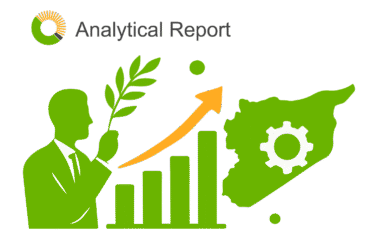
Insight Syria Intelligence Brief: Key Developments for July 23, 2025
- Escalating Sectarian Violence: Over 1,400 fatalities reported in sectarian violence along the Syrian coast.
- Evacuation Operations: More than 128,000 individuals displaced due to clashes between Druze militias and Bedouin fighters.
- Potential Economic Revival: U.S. companies announce plans to develop Syria’s energy sector following sanctions relief.
- Political and Security Challenges: Persistent sectarian tensions could hinder reconstruction and development efforts.
- Call to Action: Insight Syria offers specialized analysis to aid decision-makers in navigating these challenges.
Analytical Introduction:
Syria is undergoing profound transformations marked by escalating sectarian violence in coastal and southern regions, reflecting new challenges for the country following the fall of the Bashar al-Assad regime. Simultaneously, international initiatives aimed at rebuilding the energy and economic sectors are emerging in conjunction with the lifting of sanctions. These developments occur within a complex context demanding precise analysis to forecast the future and shape upcoming strategies.
The Sectarian Firestorm: Conflicts and Retaliation
Reports indicate that over 1,400 people were killed in sectarian violence along the Syrian coast during March 2025. Attacks primarily targeted Alawite civilians in acts of retaliation following the ousting of President Bashar al-Assad. As sectarian tensions persist in Sweida, Syrian-American citizen Hussam Suria was killed amidst sectarian clashes, intensifying a series of deep divisions that have further complicated the humanitarian situation in the country. In a development signaling the gravity of the humanitarian tragedy, evacuation operations for Bedouin families have commenced following a ceasefire agreement reached due to bloody clashes between Druze militias and Bedouin fighters. These confrontations have resulted in hundreds of deaths and the displacement of over 128,000 residents (Source).
Economic Pulse: A Stumbling Path to Recovery
The lifting of U.S. sanctions on Syria is accompanied by signs of an economic revival on the horizon. American companies, including Baker Hughes, Hunt Energy, and Argent Marine Gas, have announced plans to develop a comprehensive master plan for Syria’s oil, gas, and energy sectors. These moves follow President Donald Trump’s decision to lift sanctions in June 2025, opening avenues for investments that could contribute to a radical economic restructuring. However, the road to recovery is fraught with immense political and security challenges (Source).
Insight Syria’s Perspective:
The ongoing sectarian tensions and potential economic gains reflect stark contradictions in the current Syrian landscape. Sectarian violence poses a threat to the country’s stability and challenges economic development efforts. Leaders and decision-makers must closely monitor demographic shifts and international movements to understand new power dynamics and engage with them strategically to ensure long-term stability. United Nations and World Bank data indicate that Syria’s reconstruction requires a stable and secure political environment, alongside enhanced regional cooperation to facilitate trade and investment operations.
Concluding Future Outlook:
The Syrian landscape is likely to remain influenced by sectarian conflicts that threaten to undermine reconstruction and economic development efforts. Although the lifting of U.S. sanctions may boost investment and stimulate economic growth, security and political factors will continue to shape the nation’s future.
Call to Action:
For more detailed and customized analysis on these developments, rely on Insight Syria’s research and data analytics services to guide your strategic decisions.

